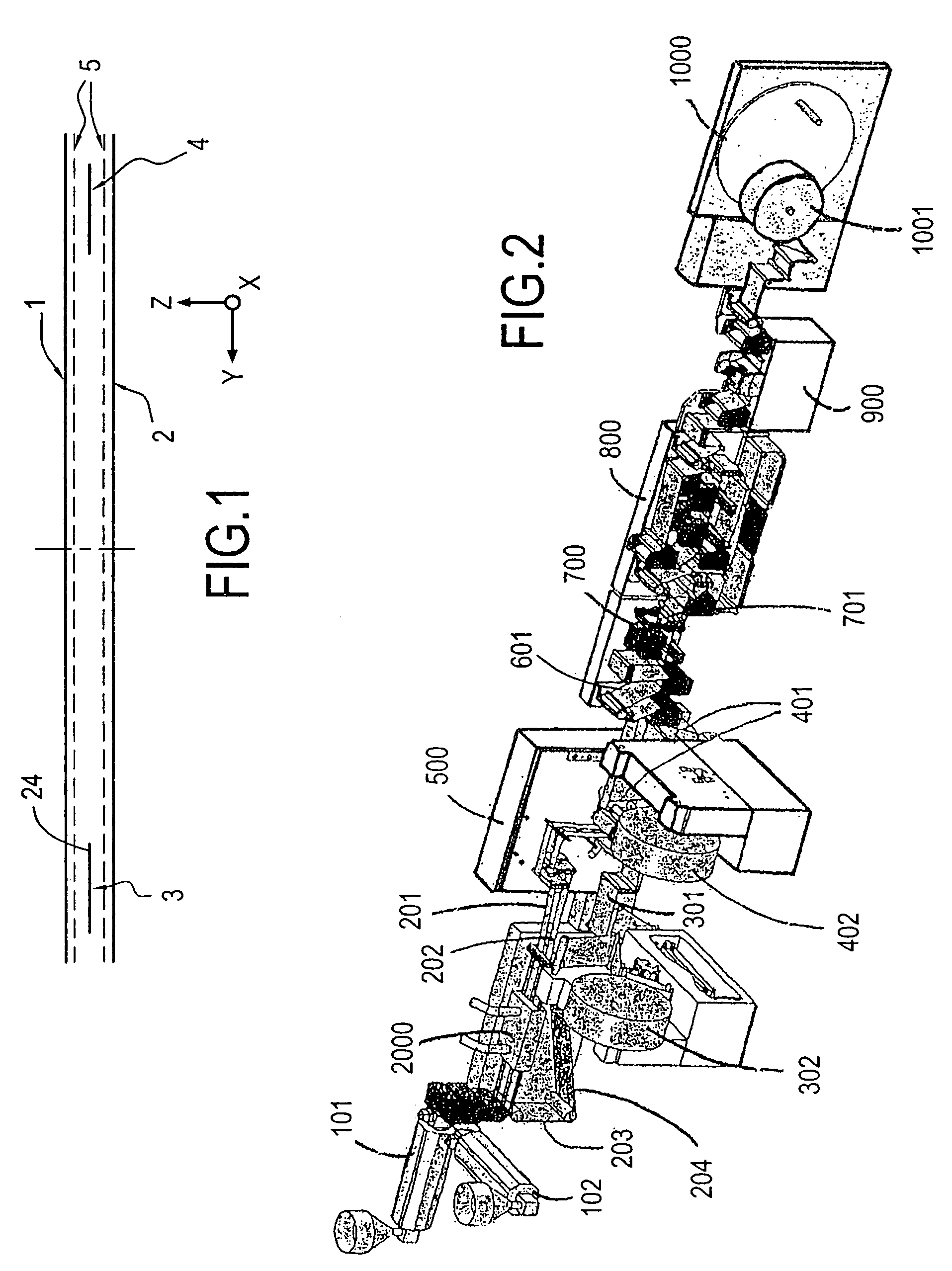Non-woven fabric laminate/elastomer/non-woven fabric
a non-woven fabric, laminate technology, applied in the field of laminates, can solve the problems of difficult direct extrusion, easy irritation of the skin of the wearer of the training pants, and poor permeability of the non-woven fabric, and achieve the effect of improving the temperature resistance characteristics
- Summary
- Abstract
- Description
- Claims
- Application Information
AI Technical Summary
Benefits of technology
Problems solved by technology
Method used
Image
Examples
Embodiment Construction
[0037]FIG. 1 shows, according to a sectional view transversely to the machine direction (direction of the X), that is to say the direction of the Y in which the laminate extends according to the invention. This laminate is constituted by two sheets or layers of non-woven fabric 1 and 2 having a large width, for example a width of 350 mm here. Two elastomer films 3, 4 of a small width, for example 35 to 40 mm, are sandwiched between the two sheets of non-woven fabric. Two layers of adhesive 5 fix each non-woven fabric to one of the faces of the elastomer films and, when there is no elastomer film, in the central region, to the other non-woven fabric.
[0038]The layers of adhesive are in the form of bands which are parallel to each other, at a distance from each other, whereby this distance can be zero and between 0 mm and 2 mm for example.
[0039]After formation of the laminate, the two layers of non-woven fabric, on the at least one elastomer film, are activated through passage between ...
PUM
| Property | Measurement | Unit |
|---|---|---|
| elongation | aaaaa | aaaaa |
| elongation | aaaaa | aaaaa |
| elongation | aaaaa | aaaaa |
Abstract
Description
Claims
Application Information
 Login to View More
Login to View More - R&D
- Intellectual Property
- Life Sciences
- Materials
- Tech Scout
- Unparalleled Data Quality
- Higher Quality Content
- 60% Fewer Hallucinations
Browse by: Latest US Patents, China's latest patents, Technical Efficacy Thesaurus, Application Domain, Technology Topic, Popular Technical Reports.
© 2025 PatSnap. All rights reserved.Legal|Privacy policy|Modern Slavery Act Transparency Statement|Sitemap|About US| Contact US: help@patsnap.com



